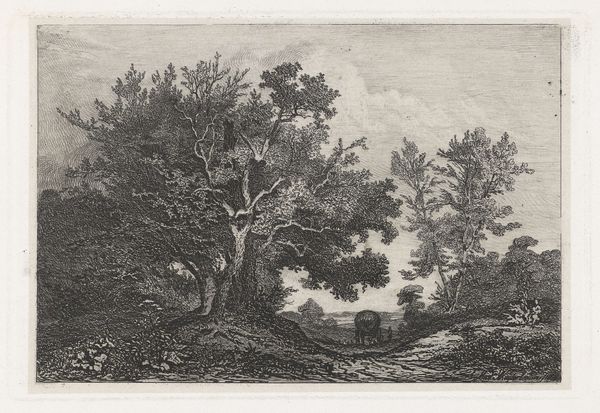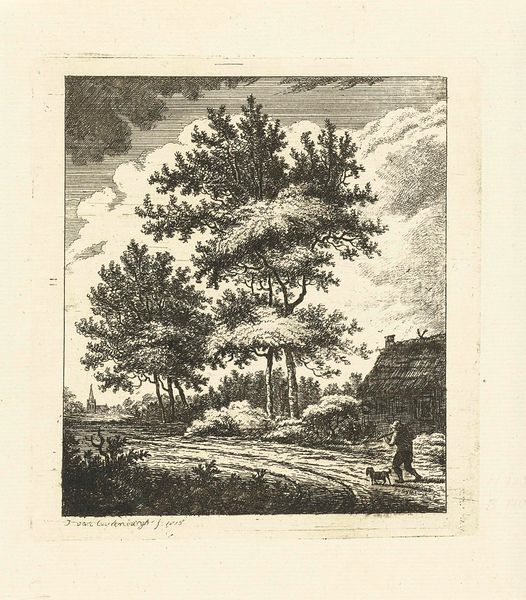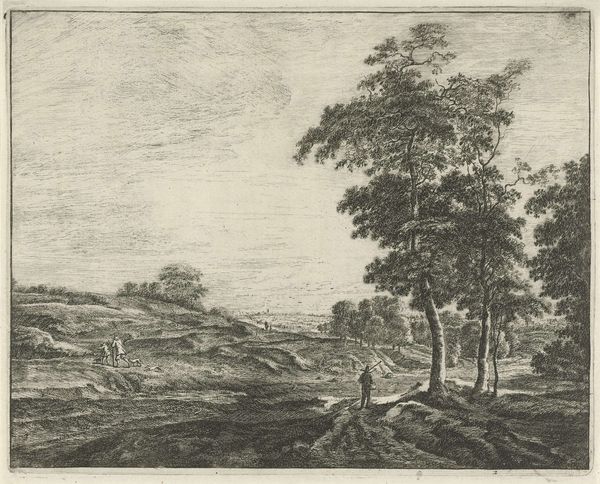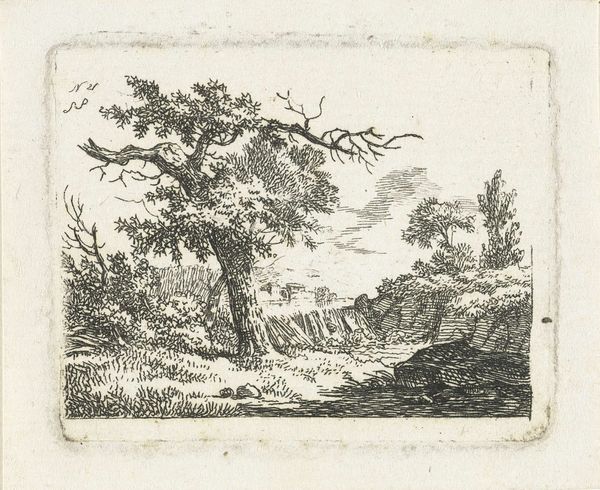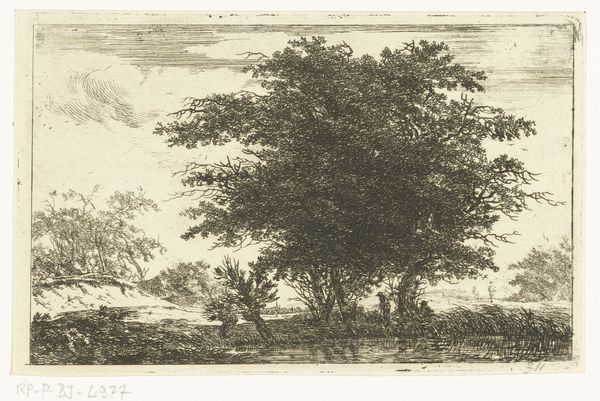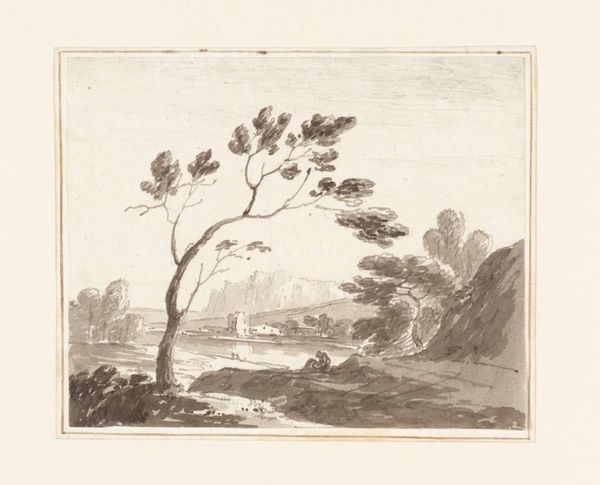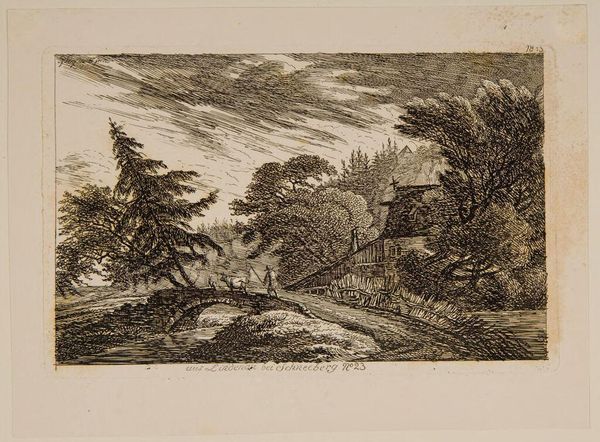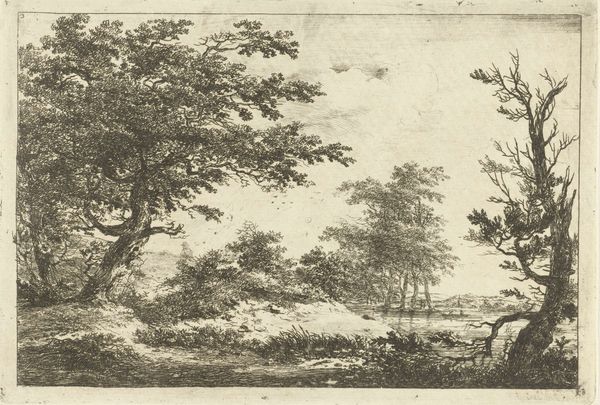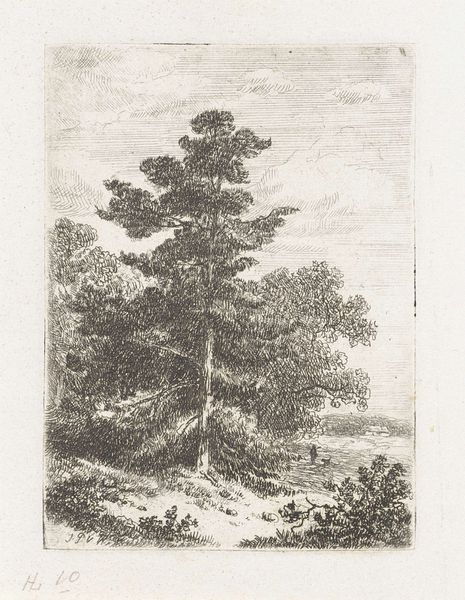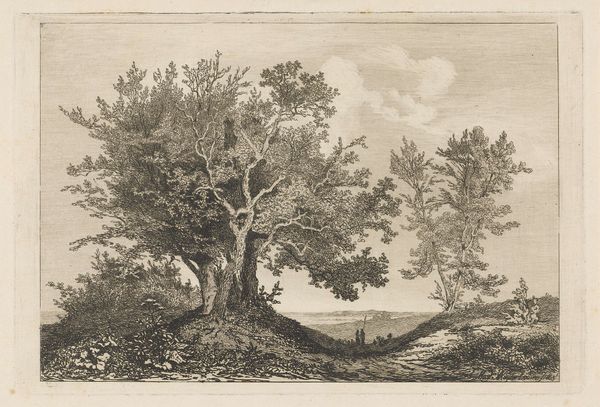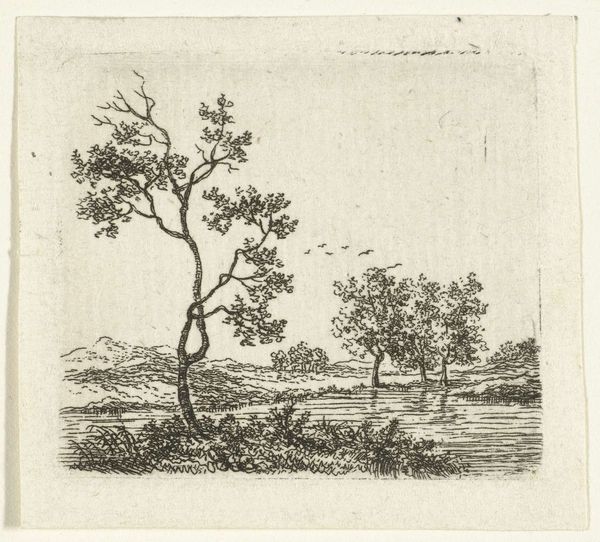
etching, paper
#
etching
#
landscape
#
paper
#
form
#
romanticism
#
line
#
realism
Dimensions: height 127 mm, width 163 mm
Copyright: Rijks Museum: Open Domain
Editor: So, this is "Boom in een heidelandschap," or "Tree in a Heath Landscape," an etching on paper from Christiaan Wilhelmus Moorrees, dating from 1811 to 1867. The starkness of the lone tree against that wispy sky is quite striking. What jumps out at you when you see this piece? Curator: What I find fascinating is the labor inherent in the etching process. The artist meticulously incised the plate, considering the chemical reactions of the acid, and the wear and tear on the tools themselves. This contrasts with the romantic subject matter—a solitary tree evoking a sense of the sublime, wouldn’t you say? Do you consider that a form of consumption for viewers at the time? Editor: Definitely, there's that Romantic appreciation for nature, but I also see a very realistic portrayal. It’s a specific tree in a specific place, meticulously rendered. The labor is apparent in that detail. Curator: Precisely! And think about the availability of paper and etching tools at that time. Who had access to these means of production, and what kind of market were these prints intended for? These works allowed greater distribution to an increasingly consumption-oriented market for art, wouldn't you say? This reveals much about the artist’s social and economic context. Editor: So, instead of focusing solely on the artist's feelings about the tree, you're drawn to the social dynamics of its creation and consumption. That really shifts my understanding of the work. Curator: Indeed. Consider the distribution and reception of these images – how they shaped perceptions of the landscape and reinforced certain social values. Art is not just about individual expression but is intrinsically linked to production and societal constructs. Editor: I see your point. Looking at the image again, I’m now thinking less about the tree itself and more about the process that made this image possible, and who benefited from it. Thanks! Curator: And I suppose by looking closer into consumption dynamics it helped us understanding the production in a more concrete way. It’s about understanding art as a product of its time.
Comments
No comments
Be the first to comment and join the conversation on the ultimate creative platform.
